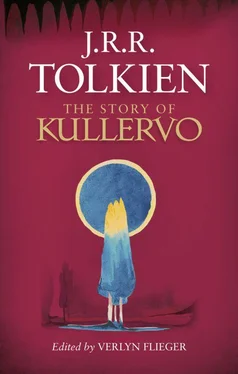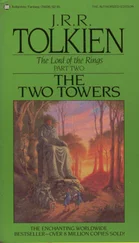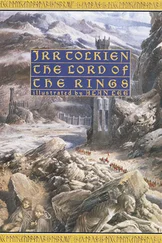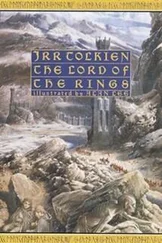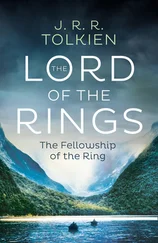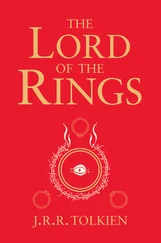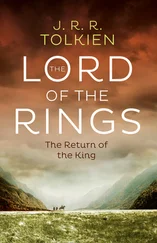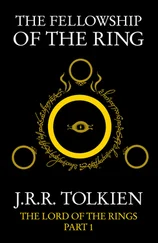‘Enkä lähe Inkerelle
Penkerelle Pänkerelle’ — or
‘Ihveniä ahvenia
Tuimenia taimenia’
‘Pänkerelle’ merely echoes ‘Penkerelle’; ‘Ihveniä’ and ‘tuimenia’ are merely invented to set off ‘ahvenia’ and ‘taimenia’. I don’t mean to say that this sort of thing is done often enough to reduce the songs to nonsense rhymes with flickers of sense; but the mere fact that such things are possible at all even if it may be for special effect or emphasis is sufficiently astonishing. The metre employed is roughly the same as that of the translations though much freer and less monotonous than the English would lead one to think. It is the octosyllabic line with roughly four beats or stresses, the rhythm is uniformly trochaic, no upbeat being used, and there is no rhyme. Two of the stresses or beats (usually the first and third) tend to stand out as the most important. It is of course, as far as English can be made to yield the same effect as Finnish, the metre of ‘Hiawatha’. What however is not so generally known is that not only the metre, but the idea of the poem, and much too of the matter and incident, was pirated for ‘Hiawatha’ — ‘Hiawatha’ is in fact the first literary offspring of the Kalevala, and nothing could better emphasize or illustrate my earlier remarks on the spirit and nature of Finnish songs than a comparison with their civilized descendant. ‘Hiawatha’ is not a genuine storehouse of Indian folklore, but a mild and gentle bowdlerizing of the Kalevala coloured with disconnected bits of Indian lore, and I imagine a few genuine legendary names — some of Longfellow’s names sound altogether too good to be invented. It was either Longfellow’s second or third journey to Europe (the one that had for its object the learning of Danish and Swedish — Longfellow was a professor of Modern languages) that coincided with the Kalevala’s first rush into Scandinavian and German translations.
The pathos alone, I think, of the Kalevala finds anything like an equal reflection in the work of its imitator — a mild and rather dull American don, the author of ‘Evangeline’, who, ‘the ‘London Daily News’ (I am quoting now an old American appreciation) admitted had produced one of the most marvellous lines in all English: ‘chanting the Hundredth Psalm, that grand old Puritan anthem.’’ This metre, monotonous and thin as it can be (especially in English), is indeed if well handled capable of the most poignant pathos, if not of more majestic things. I don’t mean only the ‘Death of Minnehaha’, but the ‘Fate of Aino’ in the Kalevala and the ‘Death of Kullervo’, where this pathos is enhanced not hindered by the (to us) almost humorous naiveté of the mythological and fabulous surroundings. Pathos is common in the Kalevala and often very true and keen. One of the favourite subjects — not a majestic one, but very well handled — is that other side to a wedding that the ‘happy-ever-after’ type of literature usually avoids: the lament and heart-sinking of even a willing bride on leaving her father’s house and the familiar things of the home. This farewell in the state of society reflected in the Kalevala was evidently often near to tragedy, where mothers-in-law were worse than anywhere else in literature, and where families dwelt in ancestral homes for generations, sons and their wives all under the iron hand of the Matriarch.
If, however, pathos or not, you are bored by the interminable sing-song character of this metre, it is well to remember again that these are only, as it were, accidentally written things — they are in essence song-songs, sing-songs chanted to the monotonous repetition of a phrase thrummed on the harp while the singers swayed backwards and forwards in time.
‘Let us clasp our hands together,
Let us interlock our fingers,
Let us sing a cheerful measure,
Let us use our best endeavours,
. . . . . . . . . . . . . . . . . . . .
And recall our songs and legends
Of the belt of Väinämöinen,
Of the forge of Ilmarinen,
And of Kaukomieli’s sword-point.’
So opens the Kalevala, and there are many other references to the rhythmic swaying of the monotonous chanters: I wish I had ever heard them with my own ears, but I have not.
The religion of the poems — after headings such as ‘language’ and ‘metre’ one feels bound to have another on ‘religion’ — if indeed such a name can be applied to it, is a luxuriant animism; it cannot really be separated from the purely mythological elements. This means that in the Kalevala every stock and every stone, every tree, the birds, waves, hills, air, the tables, the swords, and even the beer have well-defined personalities, which it is often the quaint merit of these poems to bring out with singular skill and aptness in numerous speeches in part. One of the most remarkable of these is the speech of his sword to Kullervo just before he throws himself upon its point. If a sword had a character, you feel it would be just such as is pictured there — a cruel and cynical ruffian. There is also, to mention only a few other cases, the lament of the Birch Tree, or the passage (of which the similar passage in Hiawatha is an imitation that does not improve upon its model) where Väinämöinen seeks a tree to give him timber for his boat (Runo XVI); or where Lemminkainen’s mother seeking for her lost son asks all things that she meets for news, the moon, the trees, even the pathway — and they all answer in characterised parts. (Runo XV). This indeed is one of the essential features of the songs: even ale talks on occasions — as in a passage that I hope to have time to read, the story of the Origin of Beer. Here is a bit of it (Runo XX 522–556).
‘… now the bread they baked was ready, and were stirred the pots of porridge,
and a little time passed over, when the ale worked in the barrels,
and the beer foamed in the cellars — ‘now must some one come to drink me,
now must some one come to taste me, that my fame may be reported,
and that they may sing my praises.’ Then they went to seek a minstrel,
went to seek a famous singer, one whose voice was of the strongest,
one who knew the finest legends. First to sing they tried a salmon,
if the voice of trout was strongest. Singing is not work for salmon,
and the pike recites no legends. Crooked are the jaws of salmon,
and the teeth of pike spread widely. Yet again they sought a singer,
went to seek a famous singer, one whose voice was of the strongest,
one who knew the finest legends — and they took a child for singer,
thought a boy might sing the strongest. Singing is not work for children,
nor are splutterers fit for shouting. Crooked are the tongues of children,
and the roots thereof are crooked. Then the red ale grew indignant,
and the fresh drink fell to cursing, pent within the oaken barrels,
and behind the taps of copper. ‘If you do not find a minstrel,
do not find a famous singer, one whose voice is of the strongest,
one who knows the finest legends, then the hoops I’ll burst asunder,
and among the dust will trickle… ’
Here we hear not only beer speaking and get a hint at its own estimate of itself as an inspiration of poesy and song, but we hear the Finnish minstrel cracking up his own profession, if with greater quaintness, with greater cunning and subtlety than was normally used by the minstrel of mediaeval England and France in similar passages of advertisement. In the Kalevala Beer is the cause of much enthusiasm, but the oft-repeated ‘ale is of the finest, best of drinks for prudent people’ implies (as do the rest of the poems) a certain moderation in the use of good things. The joys of drunkenness at any rate do not seem to have the same appeal as other vices, though good drink’s value in setting free the imagination (and the tongue) was often praised (R. XXI 260).
Читать дальше
